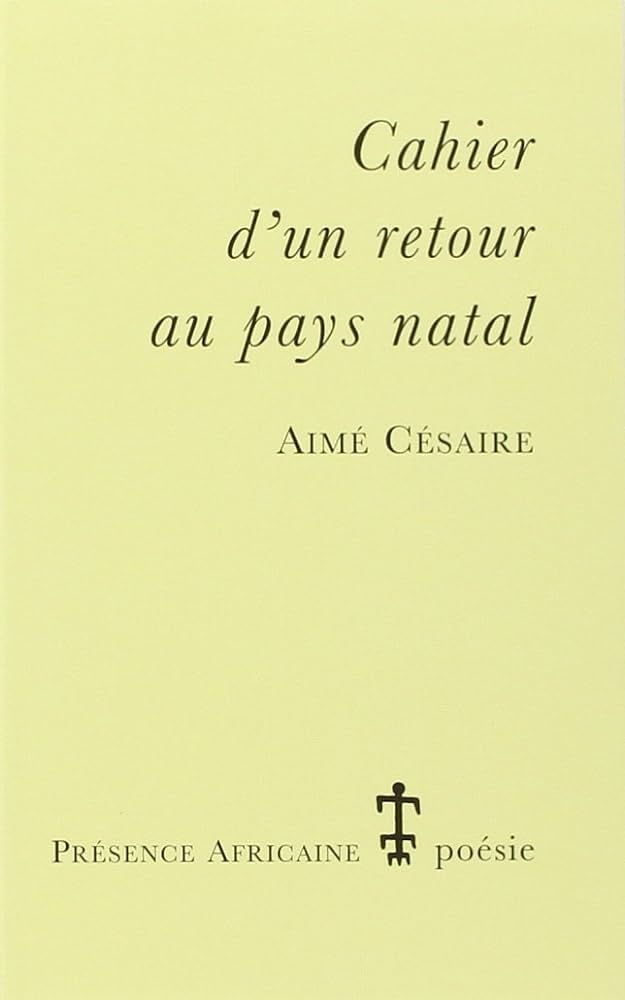
Cahier d’un retour au pays natal
Cahier d’un retour au pays natal by Aimé Césaire blows up literary and political categories: it is a long poem, but at times it reads like a manifesto; it describes the journey and the search for identity of a young man from Martinique, has autobiographical features, and yet is also a journey into the past that recalls, among other things, the transatlantic slave trade; there is no classical plot and the text is difficult to summarise.
That Cahier is incomprehensible may be the result of its creation story. Between the first publication in 1939 and the last version in 1956, Césaire revised the text multiple times. During these years he also returned from Paris back to Martinique to work there as a French teacher – Franz Fanon would become one of his students. From 1945, Césaire becomes solely involved in politics, becomes mayor of Fort-de-France and a member of the National Assembly. Creating literary works and political engagement go hand in hand throughout Césaire’s life.
Cahier d’un retour au pays natal is regarded as his most famous piece of work and as the central text of Négritude. Négritude is understood as a concept of Black self-determination that Césaire developed in the 1930s alongside Léopold Sédar Senghor and Léon-Gotran Damas, both of whom also studied in Paris. In Cahier,the revolutionary, political and artistic strength of Négritude was manifested.
To begin with, the text sketches the panorama of an island in the French Antilles through impressive imagery. Yet, here there is no paradise-like scene invoked which would befit the colonial imaginary – of the past and today. The images are infused much more with misery and decay, and a silent fury regarding colonial rule and Christian double standards.
This is followed by the departure of the first-person narrator to Europe, and another confrontation with White frames of thought, racism and violence. In a particularly moving scene in a tram, Césaire shows how the self-image and behaviour of his protagonist are shaped by internalised racism – a topic that Franz Fanon would later take up and brilliantly analyse in Black Skin, White Masks.
What’s more, Cahier does not stop at a critique of colonialism, rather it also represents a process of (self-)empowerment: Firstly, there is an appropriation of negative colonial connotations that remind me of the positive shift in how the term Queer was used from the 1990s onward. In Cahier this appropriation is accompanied by a sense of self-assertion, and the protagonist’s perspective then becomes open to alternative ways of thinking and living, to other ways of being in the world. Finally, solidarity is formed through the identification of the first-person narrator with other oppressed people worldwide – a form of universalism of the colonised and exploited that is embedded throughout the entire text. This is illustrated at the end of Cahier: On a European ship, a group of Black people rise up together against their enslavement, and from then on they sail freely on the ship. Césaire transforms the historical site of incomprehensible violence into a revolutionary image of solidarity and emancipation.
Cahier d’un retour au pays natal is not an easy text, regarding the contents as much as form. I certainly haven’t yet understood all of the different facets, and even so I was hooked: from the unbelievable poetic imagery, to the subtle daily observations and the strength of the text. It is a book whose critical spirit remains current, and through its unconditional solidarity, it gives its reader a sense of courage.
(An English translation will be published by Penguin Classics in June 2024)

